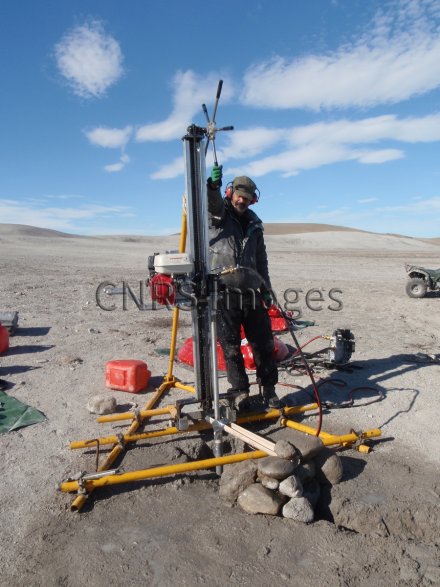Production year
2013

© Jérôme GATTACCECA/CNRS Images
20130001_1603
Forage au centre du cratère d'impact de Haugton, sur l'île de Devon, dans la province du Nunavut au Canada. Ce cratère de 23 km de diamètre est daté de 39 millions d'années. L'île de Devon est la plus grande île déserte du monde. L'objectif est de comprendre l'origine d'une anomalie géophysique inhabituelle située à cet endroit. Les chercheurs ont foré jusqu'à 13 m de profondeur pour extraire la roche à priori responsable de cette anomalie, sous le permafrost et les sédiments glaciaires. L'étude des échantillons devrait permettre de préciser les processus complexes se produisant au centre d'un cratère d'impact.
The use of media visible on the CNRS Images Platform can be granted on request. Any reproduction or representation is forbidden without prior authorization from CNRS Images (except for resources under Creative Commons license).
No modification of an image may be made without the prior consent of CNRS Images.
No use of an image for advertising purposes or distribution to a third party may be made without the prior agreement of CNRS Images.
For more information, please consult our general conditions
2013
Our work is guided by the way scientists question the world around them and we translate their research into images to help people to understand the world better and to awaken their curiosity and wonderment.